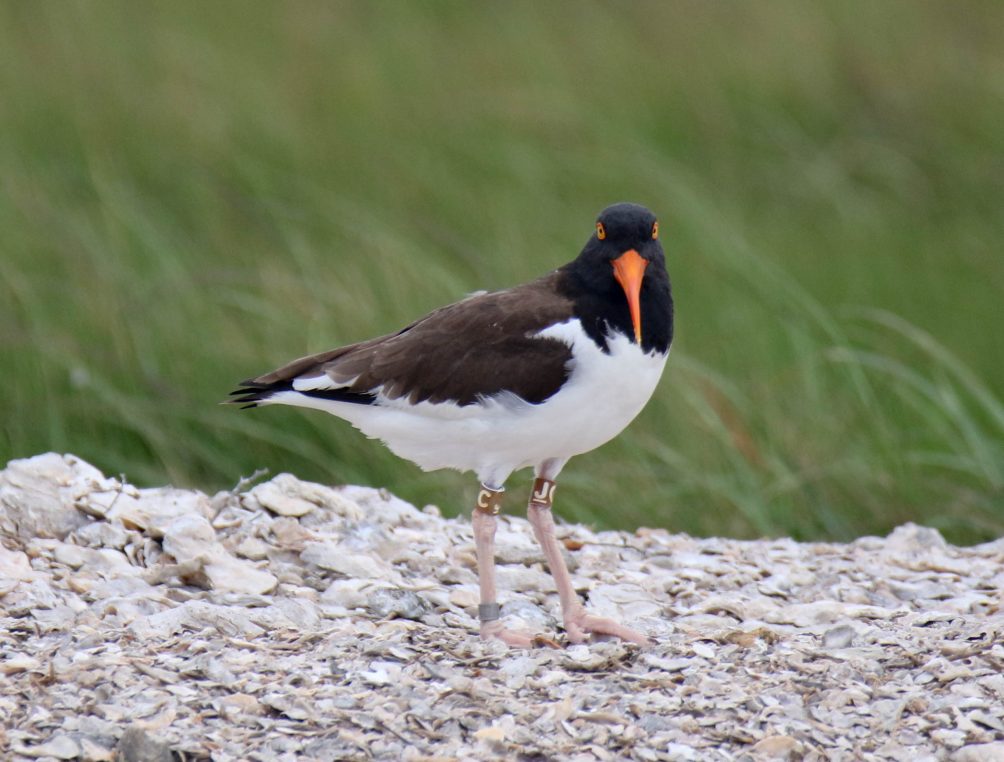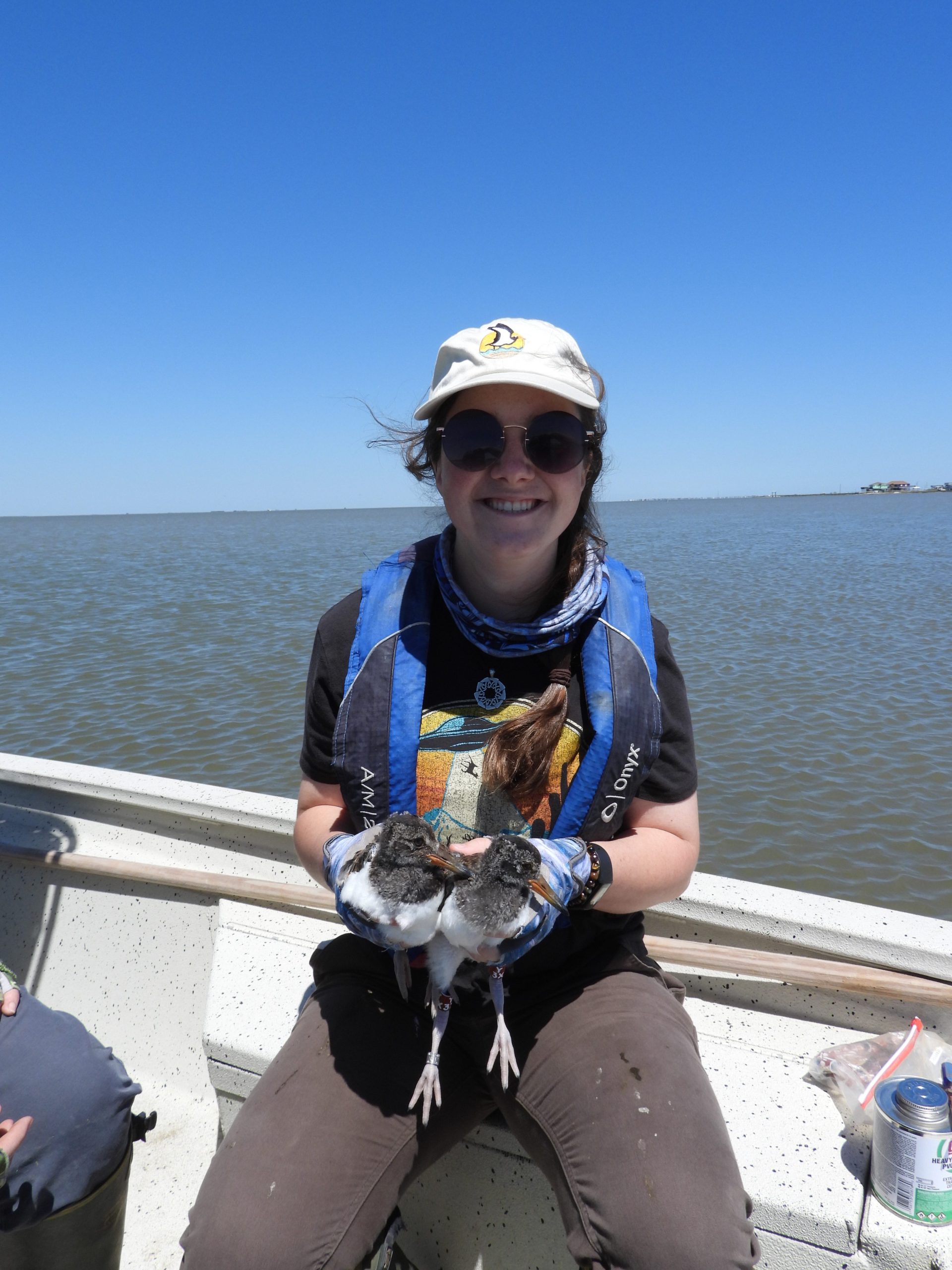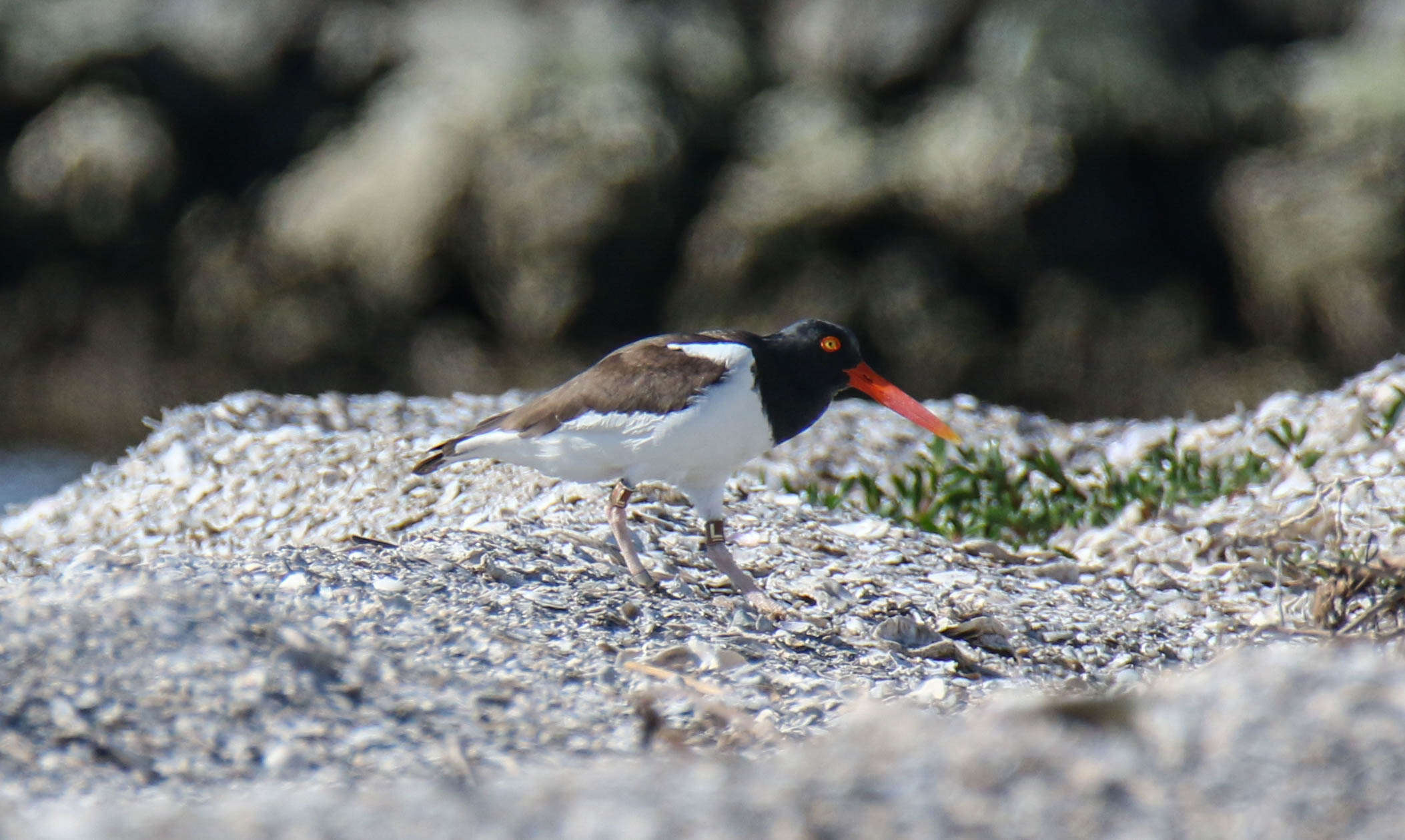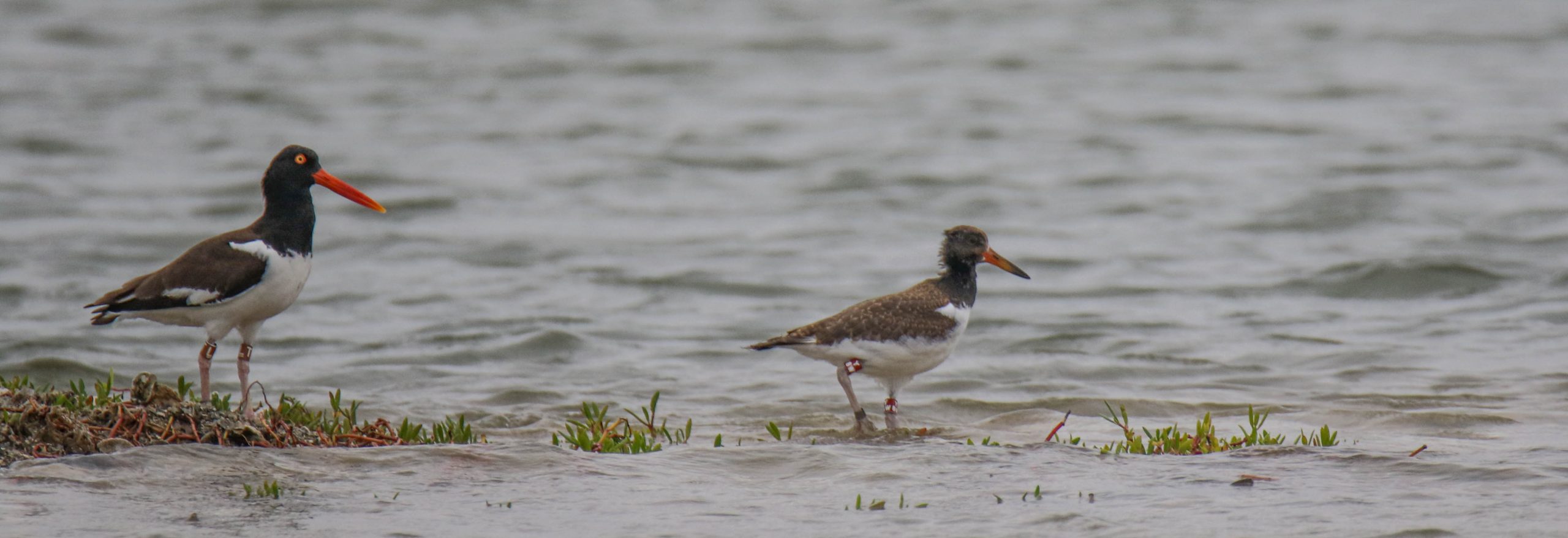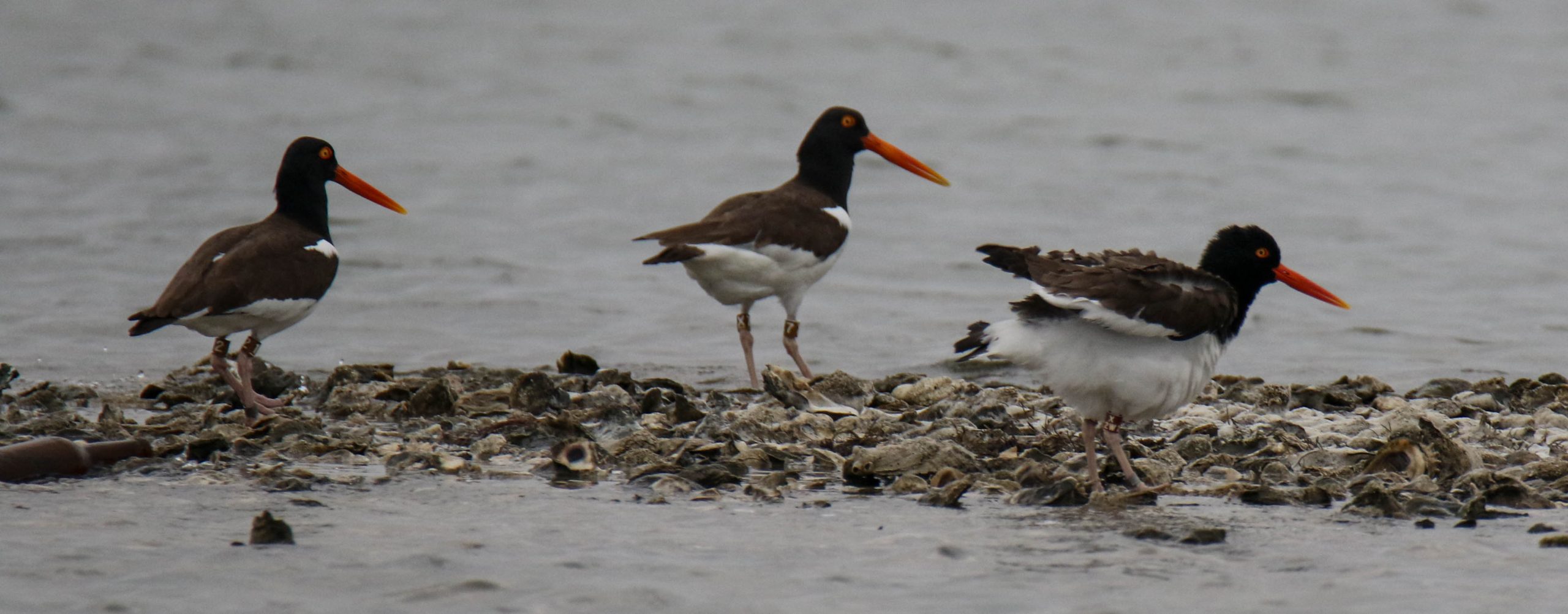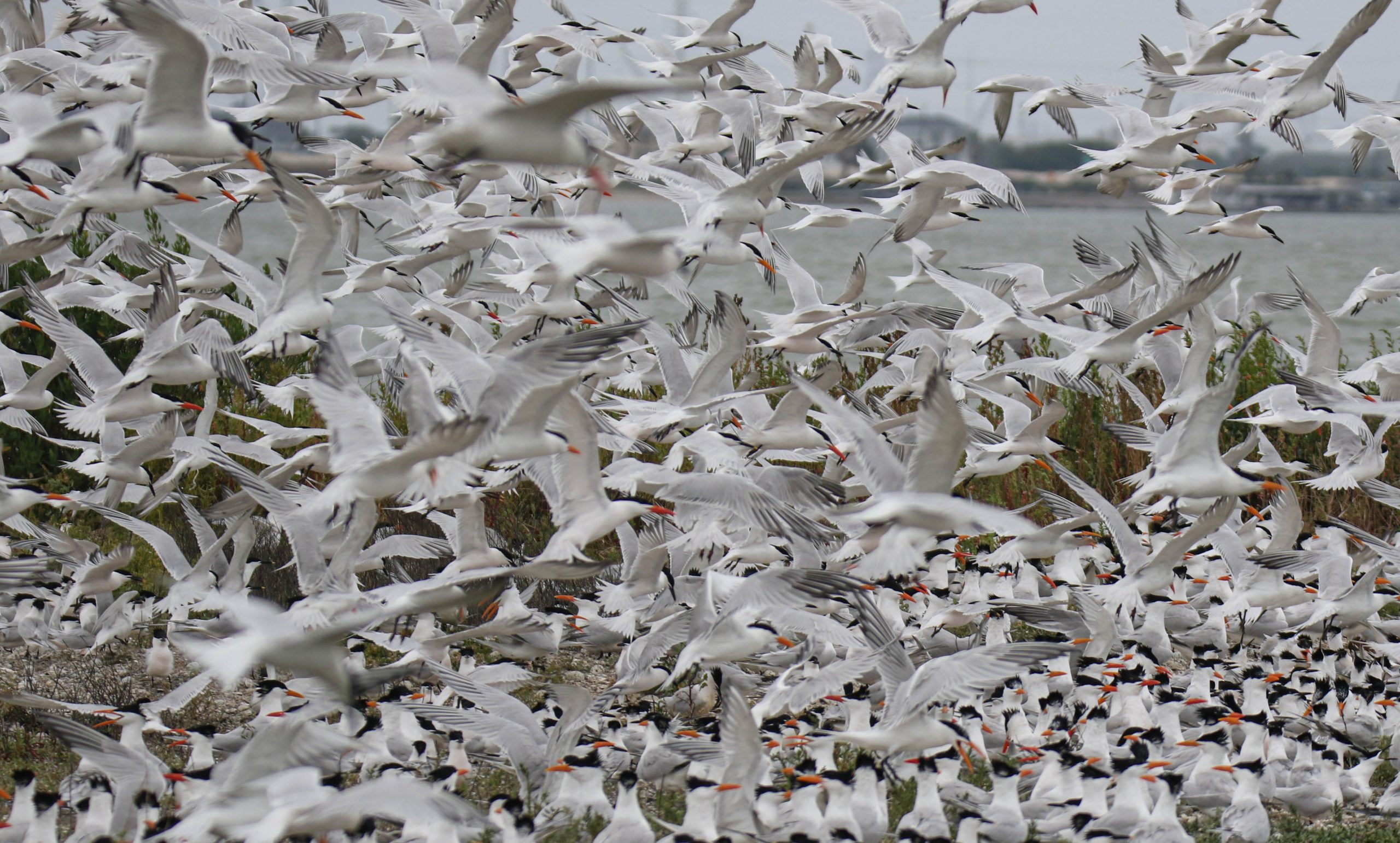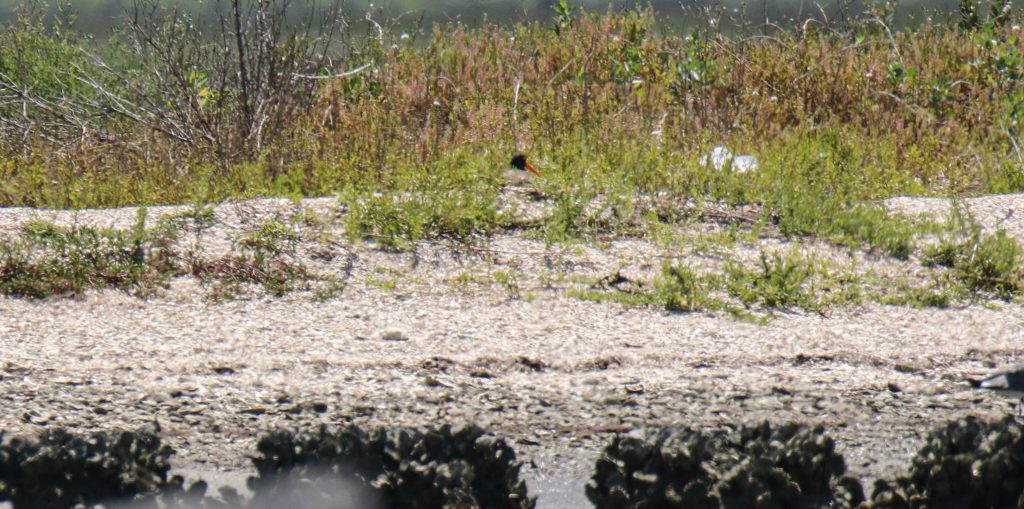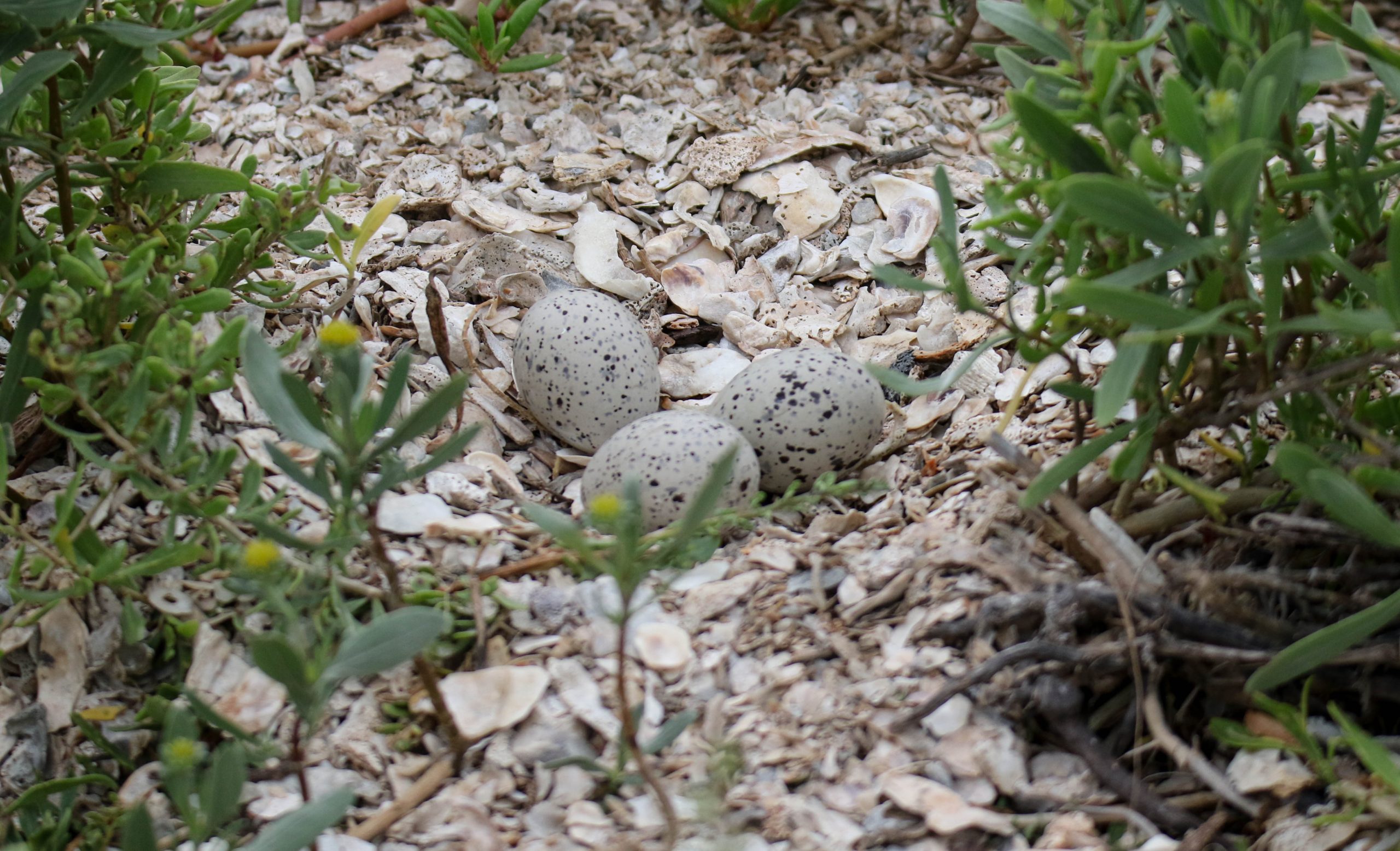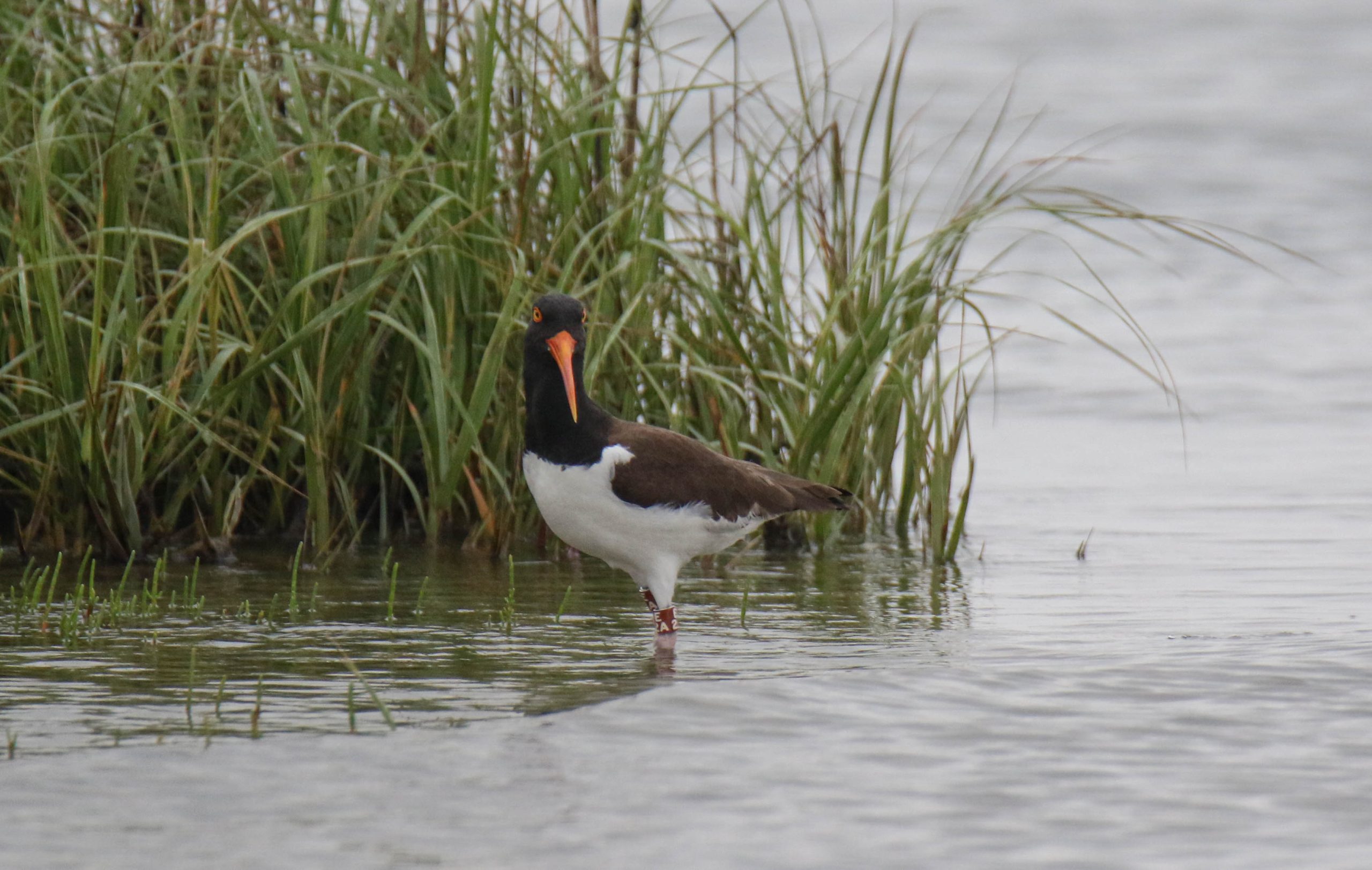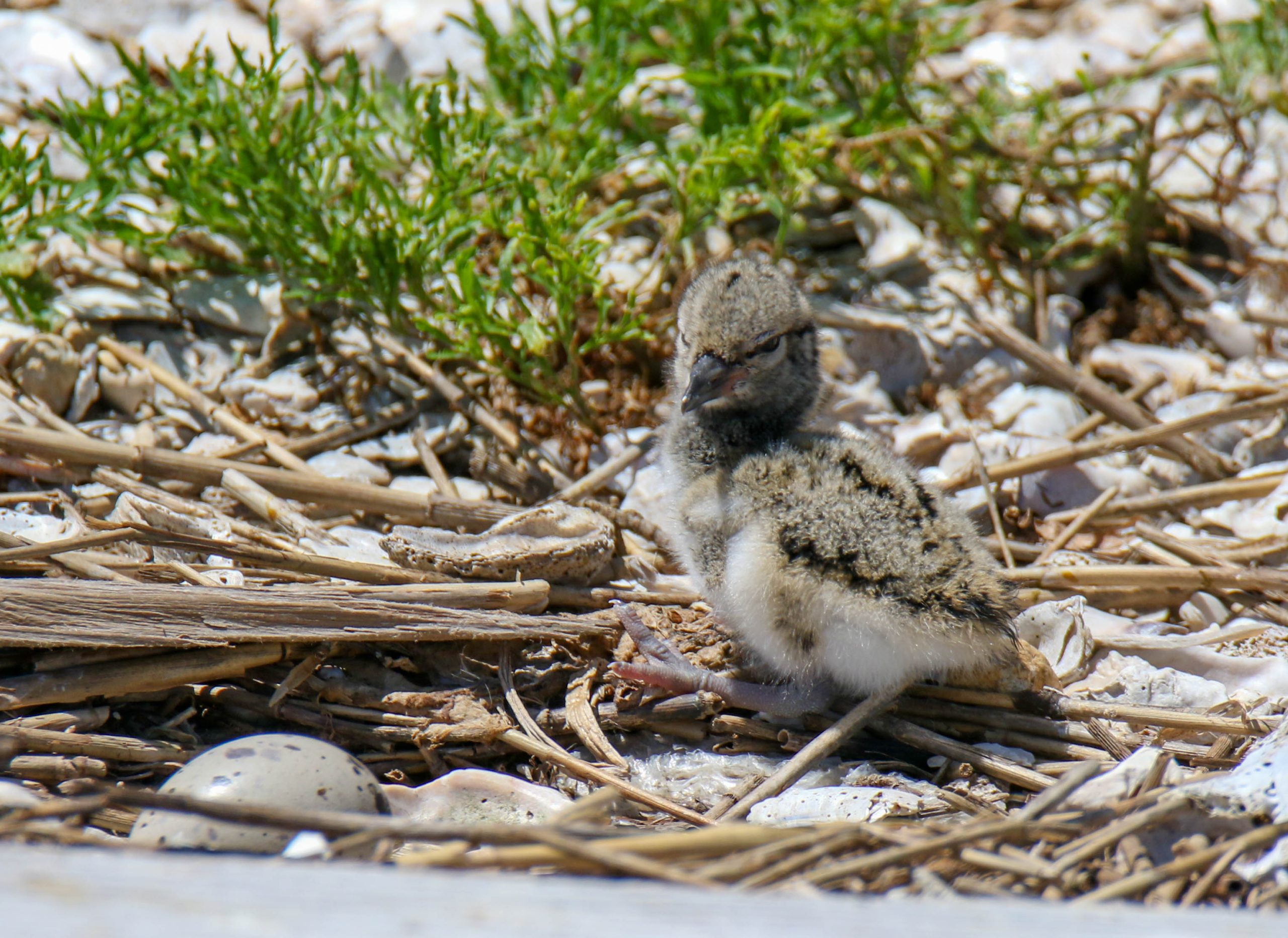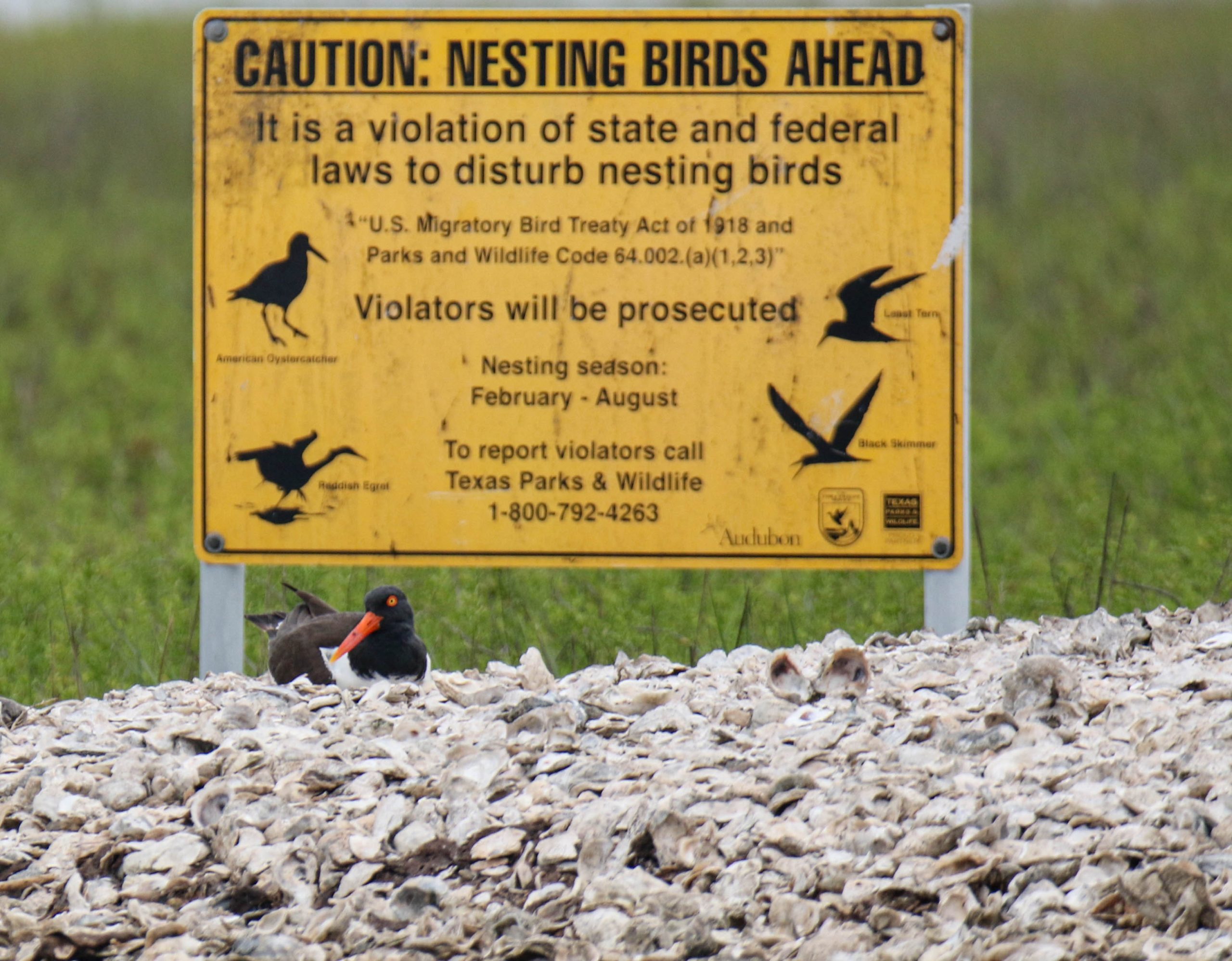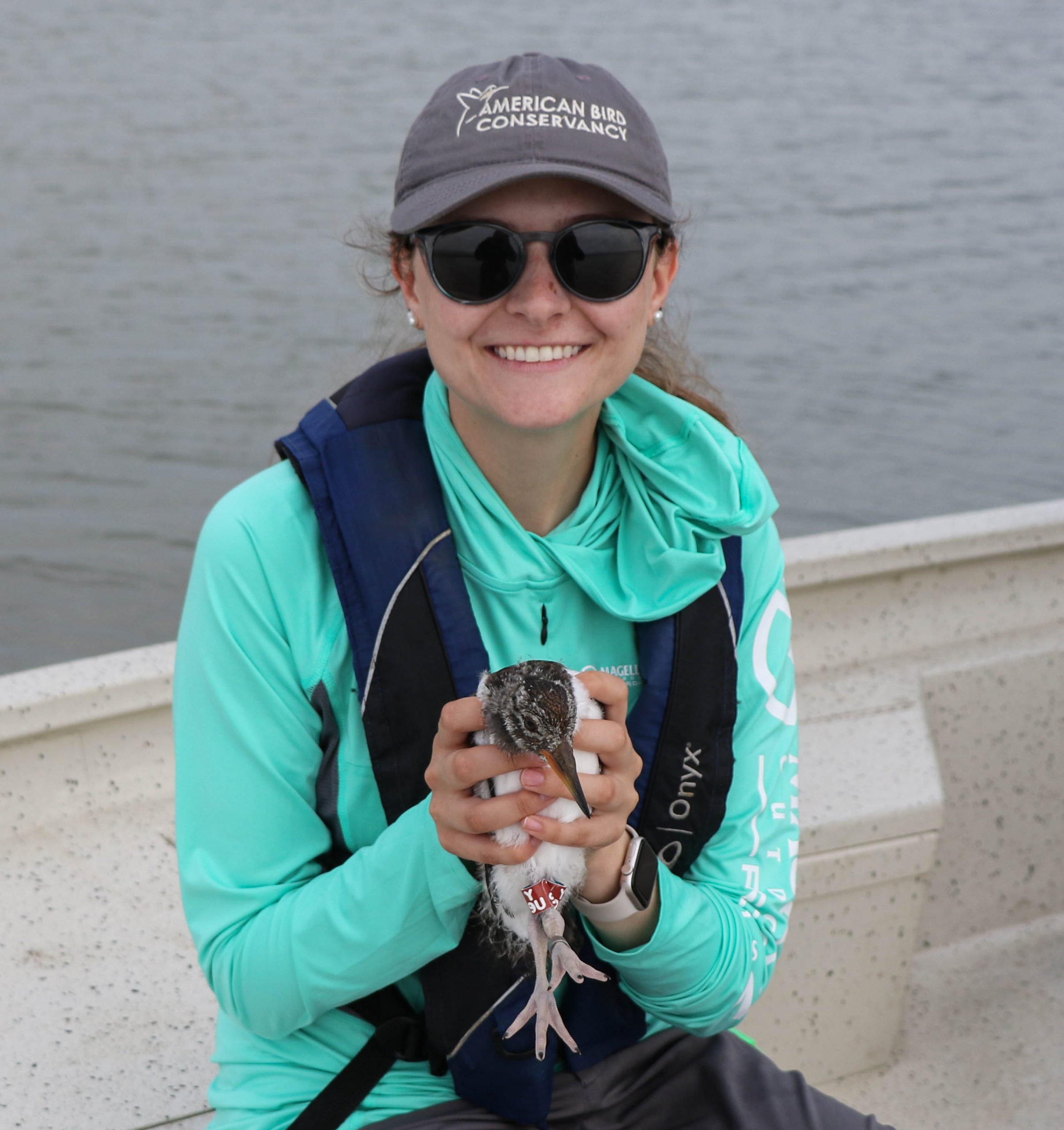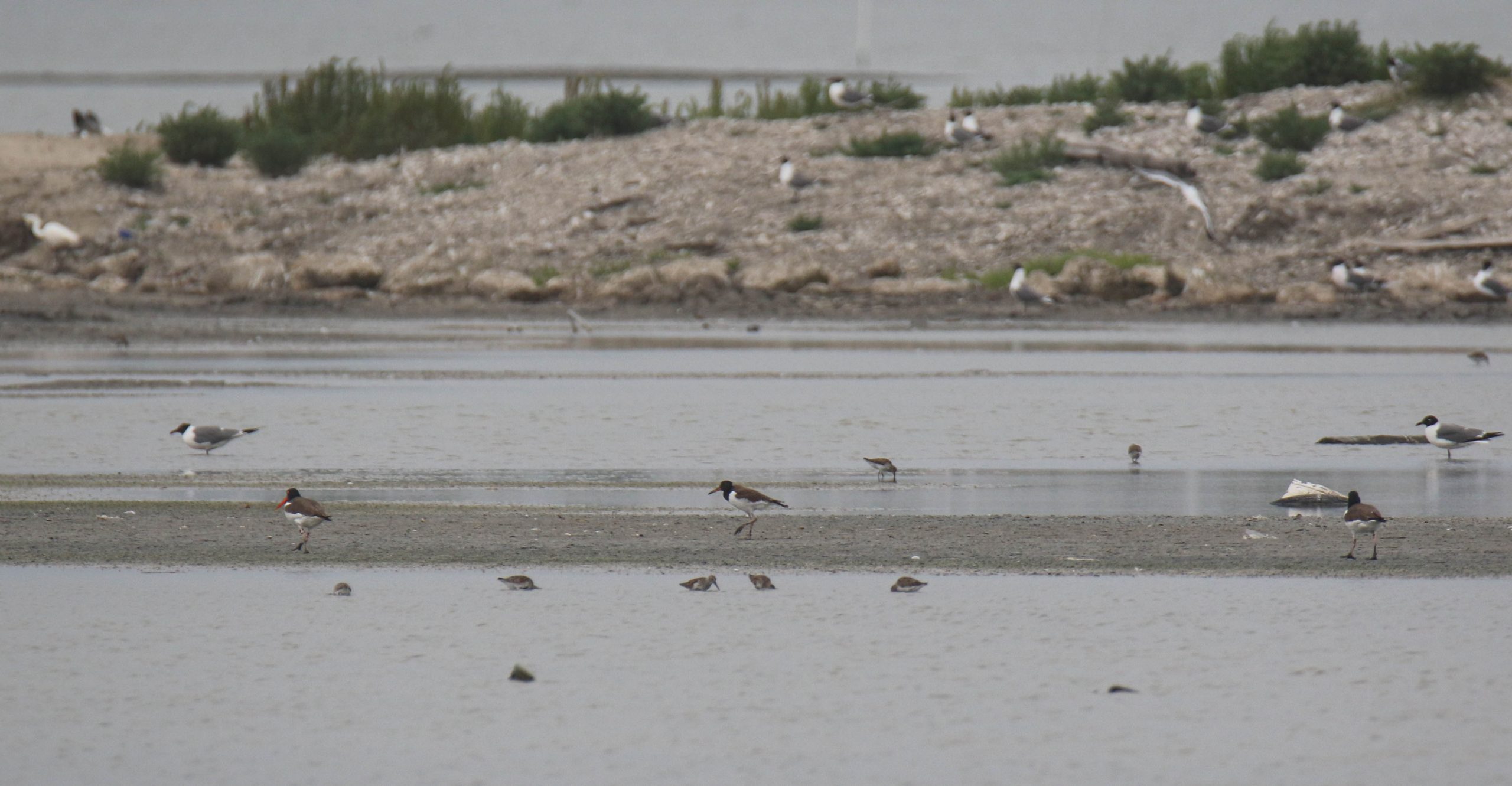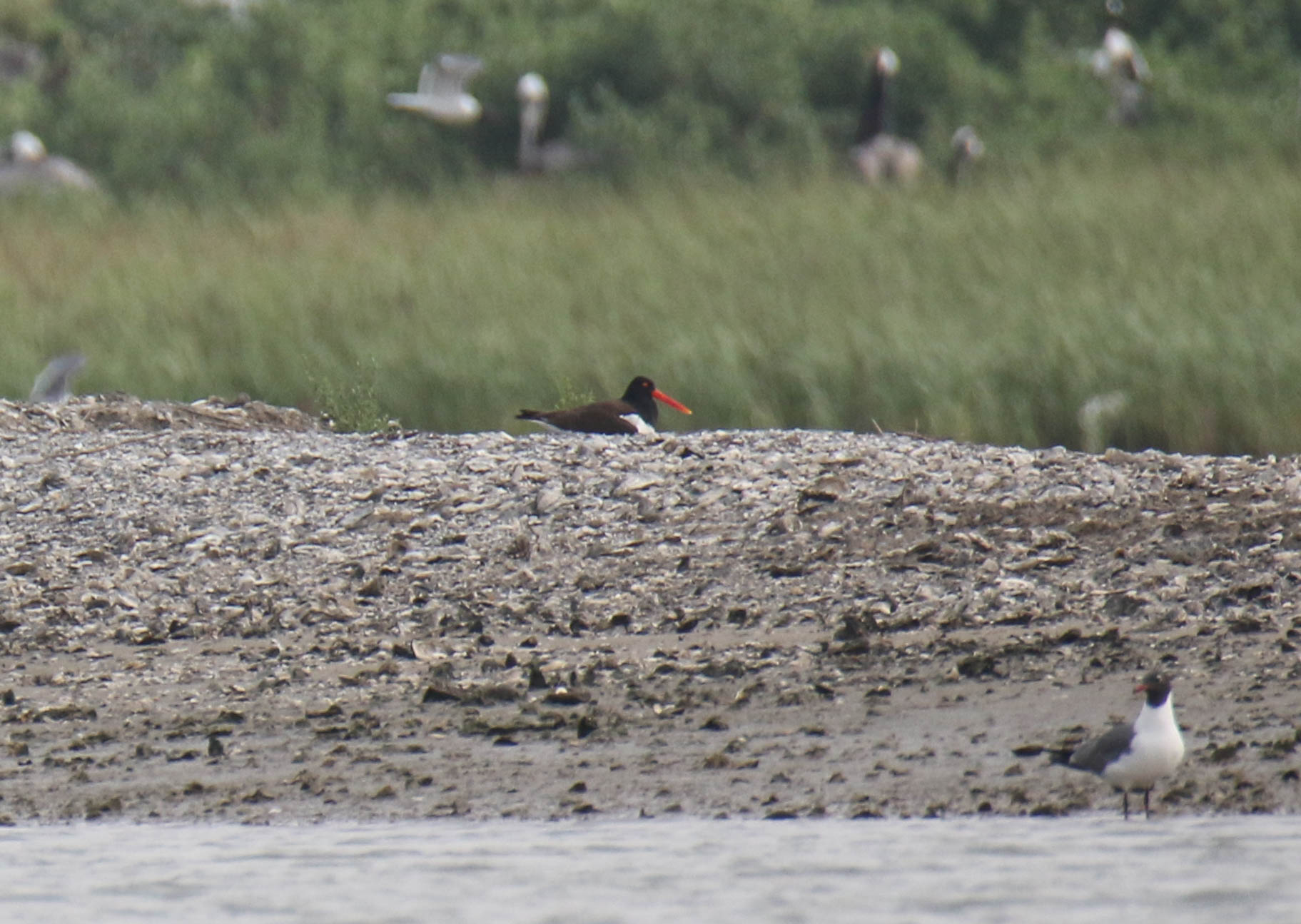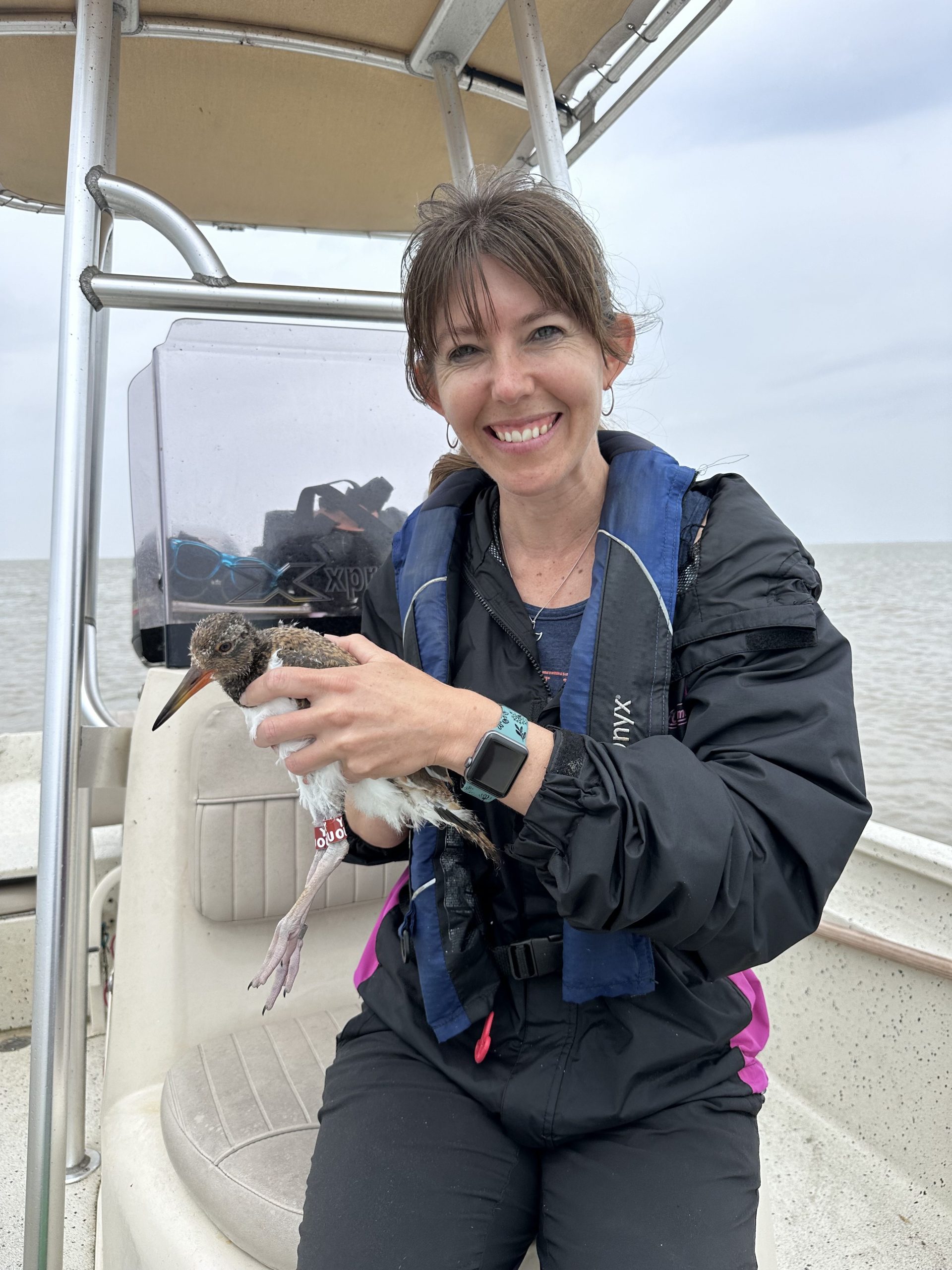By Rebecca Bracken
Whew, it’s been quite a month! You may be wondering why you haven’t seen more diary entries…well, we’ve had an interesting season battling storms, wind, low tides, and a hole in our boat! But rest assured, we’ve been going out when we could and not much is getting by us. Rebecca, Sue, Alan Wilde, volunteers Amanda Hackney (Black Cat GIS), Rebekah Rylander (American Bird Conservancy), Sarah Belles (American Bird Conservancy), Chris Schnurbusch (GCBO intern), and Texas A&M PhD students Elena Duran and Meredith Grimshaw have all been out and about!
Early in April, Sue, Chris, and I went out to check on AR and unbanded. AR and unbanded nest in Drum Bay. We chose not to continue monitoring that site this year due to time constraints, but Sue decided to monitor AR by kayak. AR and mate are great parents, and fledge a chick almost every year. This year, they had 2 chicks, so we went out to band them. The water was the lowest Sue had ever seen it in that area, but we made it and found the chicks! We banded them Y3X and Y5X. Chris got to hold her first oystercatcher chicks.
Over the past month, there has finally been a lot of activity. Up in Scenic Galveston and Swan Lake, both LR and 20 had nests with 3 eggs. We haven’t been able to get up there because of wind recently, but both will have hatched by the time we get back there. LR’s mate was trying to be really sneaky when we got there to find the nest. We knew they had something but couldn’t find it anywhere. So we got back on the boat, and that was distance that she felt inclined to get back on her eggs while we watched! LR kept walking around trying to distract us but it didn’t work.
In Swan Lake, we know 11 and his mate are up to something, but like usual, we haven’t been able to find their nest. We’ll be back to get their chicks soon! K7 and mate had a nest but it appears to have failed. We haven’t found anything for X3 or 39, but since we haven’t been able to get there in a few weeks, I bet they’ll have something when we get back there. It does appear that some Black Skimmers will be nesting on K7 and 39’s island again this year. We’ve added that colony to our monitoring schedule!
Back in West Galveston Bay, things have been busy on Struve Luci. We haven’t found a new nest for 12 and unbanded yet, but E5A and unbanded finally have a nest! That pair apparently decided to wait until LT and JA were finished since all 3 territories overlap now. E5A’s nest has 3 eggs and will hopefully hatch in mid May. LT and JA ended up with one chick that we banded Y8W, and it should fledge any day now! YK and unbanded also ended up with only one chick, banded Y1T, and it fledged last week.
We aren’t sure what 12 and X7 and their mates are up to these days. They keep spending time as a group, which is a bit strange. Maybe they were also biding their time and waiting for space to open up again.
On Jigsaw, we are down to two pairs. LH and JX have completely vanished unfortunately. YE and unbanded had a nest that we are pretty sure hatched, judging by the adult behavior. We haven’t found the chicks yet because we’ve been avoiding the large tern colony on that island. We try not to disturb the terns as that island is an important nesting site for several species (note to readers – please keep your distance from these colonies! We only approach when we need to, and we get our work done very quickly to minimize disturbance). We’ll check back when it should be time to band the oystercatcher chicks. X2 and W2Y should have a nest, and we suspect they do, but it appears to be right up against the tern colony somewhere. We’ll look again next week.
In Gangs Bayou, the skimmers are starting to come back so we’ll be doing colony counts there as well. We found A4A on a nest with 1 egg, but haven’t seen the pair in a few weeks now. They’re pretty sneaky, so we’ll check on them again this week. Interestingly, there is now an unbanded pair on Galveston Island where we always stop to use the “facilities” and we think they’re about to lay eggs. Stay tuned; we’ll try to catch one of the birds if they do end up with a nest.
On South Deer, just about everyone has had a nest. A1A and unbanded have a nest with 3 eggs that will hatch in a week or two. A5A and mate have sadly disappeared, and no one has taken over their territory as far as we can tell. Y7 and unbanded had a nest with 2 eggs, but it appears to have failed because they have a new nest with 3 eggs! We know it’s a new nest because we are able to float the eggs – we can carefully put the eggs in a small container of water (don’t try this at home!) and depending on if they float or rest at the bottom, we know how recently they were laid.
The last pair on South Deer, F1A and E2A, had a nest with 2 eggs that likely hatched a few weeks ago. Unfortunately for us, if they have chicks, they’re hiding them in a Caspian Tern colony. We took a quick look, but left just as quickly to not disturb the terns. Will take another look soon.
On North Deer, C1A and unbanded had a nest with 3ggs that hatched about 2 weeks ago. We saw them on their territory last week acting very suspicious, so we know they still have at least one chick. We will try to band it next week. YM is now with E8A, nesting on north side of North Deer. They had a nest with 3 eggs that we assumed hatched a few weeks ago, but they too have disappeared. There are so many places for them to hide a chick on North Deer!
On Marker 52, JJ and unbanded have a nest beautifully placed near the nesting bird sign. JJ is staying tight to his nest, making sure it isn’t disturbed by the many gulls and pelicans hanging around. JC and new mate U5Y finally have a nest as well. U5Y is a new breeding bird to our sites, so it was an easy nest to find – when the oystercatchers know us, they run away from their nests before we get close, but when they don’t know us yet, they stay on the nest as long as possible. Makes it much easier to find!
FR and unbanded had a nest with 2 eggs, and we banded their 1 chick about 2 weeks ago; it is now Y9U. It should fledge this week.
On the Tiki Spoil island, we had a bit of a run around. We knew E4A and X3Y had a nest with 3 eggs, and then had 2 chicks. But Sue and I could not find the chicks when it came time to band them! We looked and looked, but there is so much to hide in there, it was impossible to find the chicks. Sure enough, they have one chick that recently fledged. Sarah and I tried to catch it, but it ran into the mud flat where we couldn’t follow.
The other pair on that island, Y2 and W1W, had a nest with 2 eggs that hatched last week. We’ll be back to band that chick; the pair nested on a little berm separated from the main part of the island, which will hopefully make the chick much easier for us to find.
In East Matagorda, LF and M4’s nest hatched, and Rebekah and I caught and banded it’s 1 chick Y0U. 25 and unbanded had a nest that hatched more recently; we’re hoping to band its chick this week. E9A hasn’t shown any signs of nesting sadly, and F8A nest likely got overwashed but we’ll confirm soon. Will know more this week.
The weather may or may not cooperate this week, but we’ll definitely be out again next week to catch up with all our feathered friends! Stay tuned for more oystercatcher excitement.
If you like oystercatchers and you want to support this project, you can make a donation (thank you!) on our website here. And how could anyone not like oystercatchers! You can also adopt a pair of oystercatchers to support this project if you’d like. If you adopt a pair, you will receive an adoption certificate for your birds and I will update you monthly on their progress throughout the breeding season. All adoption funds will be used to fund our work for the oystercatchers.
Current Stats for upper Texas coast from Swan Lake to East Matagorda Bay: 6 nests being incubated, 3 failed nests, 2 nests with unfledged chicks, 5 nests with undetermined status, 7 chicks fledged
Note: All trapping and banding for this project is in accordance with federal and state permits issued to Rebecca Bracken, GCBO Conservation Research Director. Bird handling by volunteers is only permitted in the presence of Rebecca Bracken or Susan Heath and volunteers are trained in proper bird handling techniques.

